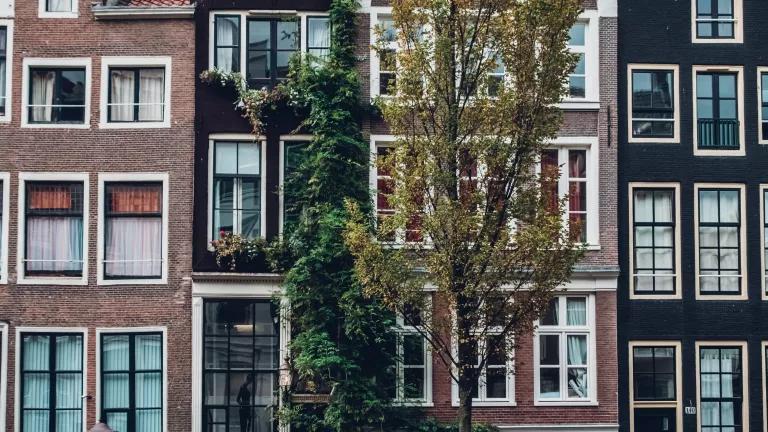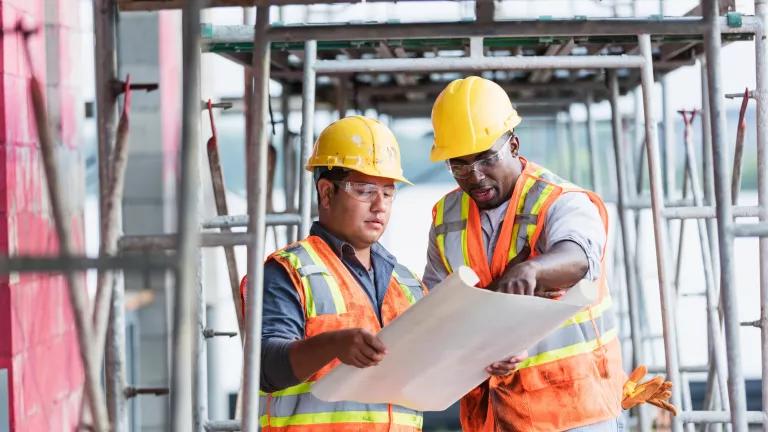Global Effort to Decarbonize Buildings Is Accelerating
Efficient electrification of heating and strong investment in energy efficiency are the lowest cost and best paths to decarbonize our buildings, in the U.S. and around the world.

Photo by Robin Benzrihem on Unsplash
This blog was authored by Matt Flaherty, an NRDC intern and graduate student at Indiana University.
Momentum is growing in the global effort to eliminate carbon emissions in buildings, especially from fuel burned for space and water heating. While a California city just became the first U.S. municipality to stop gas hookups in new buildings as of Jan. 1, 2020, countries and other cities around the world also are taking steps to meet the challenge of transitioning from fossil fuels to electricity generated from clean resources like wind and solar.
Following Berkeley, California’s lead, 50 other California cities are exploring legislation or incentives for building electrification, as are other U.S. cities, in light of the worsening climate crisis.
Globally, countries like the Netherlands and Ireland, as well as municipal coalitions, are already leading with ambitious plans to achieve net-zero emissions buildings sectors—meaning all the energy running them comes from emissions-free renewable resources—by 2050 at the latest. That’s the deadline experts say we must meet to avoid catastrophic climate impacts.
The Importance of Decarbonizing Buildings
Buildings are a significant source of climate pollution, often accounting for around 50 percent of a city’s greenhouse gas emissions. This pollution comes from burning fossil fuels on site primarily for space and water heating, and from generating electricity for lighting, air conditioning, appliances, or space and water heating.
We can eliminate emissions by electrifying heating and hot water with super-high efficiency heat pump technology and ensuring our electricity increasingly comes from renewable resources. However, to reach zero emissions in the most cost-effective and practical way, it’s crucial that we also lower energy demand (and thus, power generation) through such improvements as weatherization, high-efficiency appliances, and LED light bulbs. Lower demand also allows low-cost renewable energy to be used more widely, further cleaning the air and reducing energy bills.
It’s easier to avoid emissions in new buildings through such tools as energy codes that require more insulation or fully electric appliances. Building all-electric often costs less than connecting to gas and avoids the need for infrastructure that would likely become under-utilized or unused before the end of its life, leaving remaining gas customers with higher bills to pay for it.
Retrofitting existing buildings can be more difficult, but decarbonization is still achievable. The European Union (EU) estimates that 80 percent of its 2050 buildings are already built, highlighting the importance of retrofits. Developing countries have built a smaller share of their 2050 building stock, lessening their retrofit needs, but making zero-emissions new building standards critical.
What’s Happening Globally
The Netherlands put considerable effort and outreach into developing an ambitious national Climate Agreement that includes a plan to electrify buildings and fully phase out fossil (“natural”) gas by 2050. This is no small task, as 95 percent of the country’s 7.8 million households are connected to gas.
The government aims to convert 1.5 million homes—more than 20 percent of its housing stock—to fully electric by 2030, leading the way with municipal buildings and public housing it controls.
Elsewhere, the Netherlands will use a series of carrots and sticks. A tax on gas will increase over time, while taxes on electricity will be reduced. Subsidies and favorable loans will help speed the transition, with special assistance for the approximately 10 percent of the population experiencing a high energy burden. Landlords will be required to enhance efficiency and electrify heating at their properties.
The country will aggressively expand wind and solar energy development. Fossil fuel power plants will be taxed and burning coal will be prohibited by 2030.
Meanwhile, Ireland recently stepped up the targets of its Climate Action Plan, aiming for energy efficiency upgrades in 500,000 homes, plus 600,000 highly efficient electric heat pumps installed by 2030 (400,000 in existing homes). With a housing stock of just over 2 million, this is a significant commitment, and the plan specifically seeks to avoid the “carbon lock-in” of connecting to gas lines.
Also, Denmark has committed to phase out fossil fuels for heating by 2050. Finland recently set a carbon neutral target by 2035, which will include a shift to electric heating. And as more countries set net-zero carbon goals and develop detailed plans, efficient electrification will move to the fore, helping drive innovation and cost reductions.
Japan has installed over 140 million air source heat pumps to date, while China installs 40-50 million heat pumps annually. Three-fourths of new buildings in Switzerland use electric space and water heating, and heat pumps are now the dominant heating system for new buildings in Germany.
Cities Seeking to Lead
Around the world, cities are often going above and beyond national commitments. Nineteen members of the C40 coalition, including London, Tokyo, and Johannesburg, have already committed to net-zero-carbon new buildings by 2030.
Each of the 94 C40 cities—together representing over 700 million people and one quarter of the global economy—is developing a Climate Action Plan by 2020 as part of C40’s Building Energy 2020 program. It focuses on accelerating efficiency retrofits of private buildings, utilizing municipal buildings to lead by example, and ensuring via building codes that new structures are highly efficient and “suitable for a net-zero carbon economy.” The program also includes a special focus on decarbonizing Chinese buildings, as C40 includes 12 Chinese cities.
The World Green Building Council announced in May its Build Upon2 initiative with eight European partner cities, including Dublin and Madrid. The project targets efficiency in building renovation as part of a strategy to “empower cities across Europe to join forces with national governments and industry to decarbonize their existing building stock by 2050.”
Efficient electrification of heating and strong investment in energy efficiency are the lowest cost and best paths to decarbonize our buildings, here and around the world. Most of the technology is already available to create pollution-free and efficient buildings around the globe; it’s time to dig in and make it happen.




